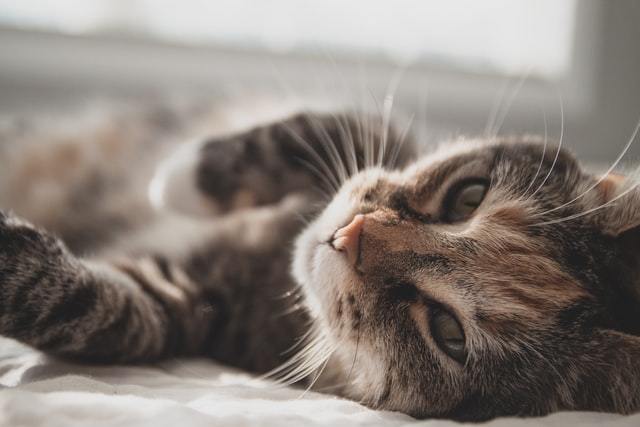In this two part guide, we’re looking at six ways you can make a cat with arthritis more comfortable at home. If you haven’t already read Part 1, you can find it here.

4. TRANSITION TO A JOINT-FRIENDLY DIET
Just like with humans, when joint pain becomes an issue it’s important to pay careful attention to diet and nutrients.
Studies suggest that cats fed a diet high in Omega 3 are both more mobile and free of arthritic pain. This is probably going to be good news for your cat, as one of the best sources of this healthy fat is fish!
Supplements which include glucosamine and chondroitin are a great addition for maintaining cartilage and joint health. Oh and great news if your cat is fussy. These supplements are available as treats, sprinkles and liquids. With experimentation you’ll find what they enjoy.

5. DON’T WRAP YOUR CAT IN COTTON WOOL
When you know a friend is in pain it’s all too tempting to make them rest and not push themselves too hard.
While you do need to make sure you’re not pushing your cat to move too strenuously, you definitely want to make sure they continue to get exercise. Short, gentle play is the order of the day.
I’ve found a great game for older cats is to place their favorite toy on a string under a mat, slowly dragging it out of their sight. They’ll get to indulge their hunting and pouncing instincts without too much leaping or gymnastics.
The goal is to keep your cat gently active while avoiding activities which cause pain.

6. DO PROVIDE EXTRA CARE
While you should be careful not to let your cat be too coddled, you may need to get more involved in helping them be comfortable, especially on a really painful day.
It’s quite common for arthritic cats to need a bit of extra help with grooming, especially in areas they’re finding harder to reach. A little warm water and a gentle brushing will keep their fur healthy.
This has the added bonus of being a luxurious massage for your cat. Let’s face it - they’ll probably also appreciate that you know your place as their willing and devoted servant. Be sure to read their body language though. If they’re especially sore they may not want to be touched in some areas.
You may also need to keep an eye out for overgrown claws owing to less activity. Carefully trim them back when necessary, ideally when your cat is feeling relaxed and mellow.
Taking care of a cat with arthritis does involve an adjustment. The key is to work with their instincts and habits, finding ways for them to enjoy their feline follies with a minimum of pain and discomfort. As always, the best guide you have on how to help is good old fashioned empathy. If you watch closely enough, cats will tell you what they need.



